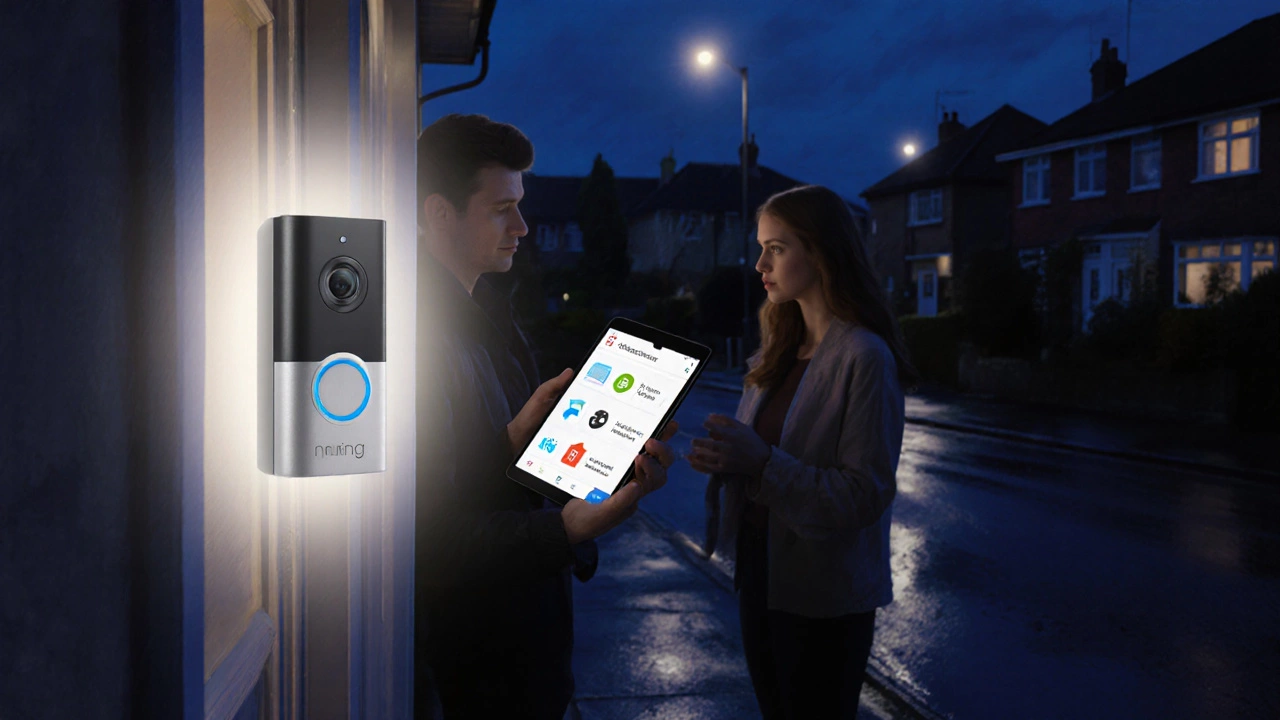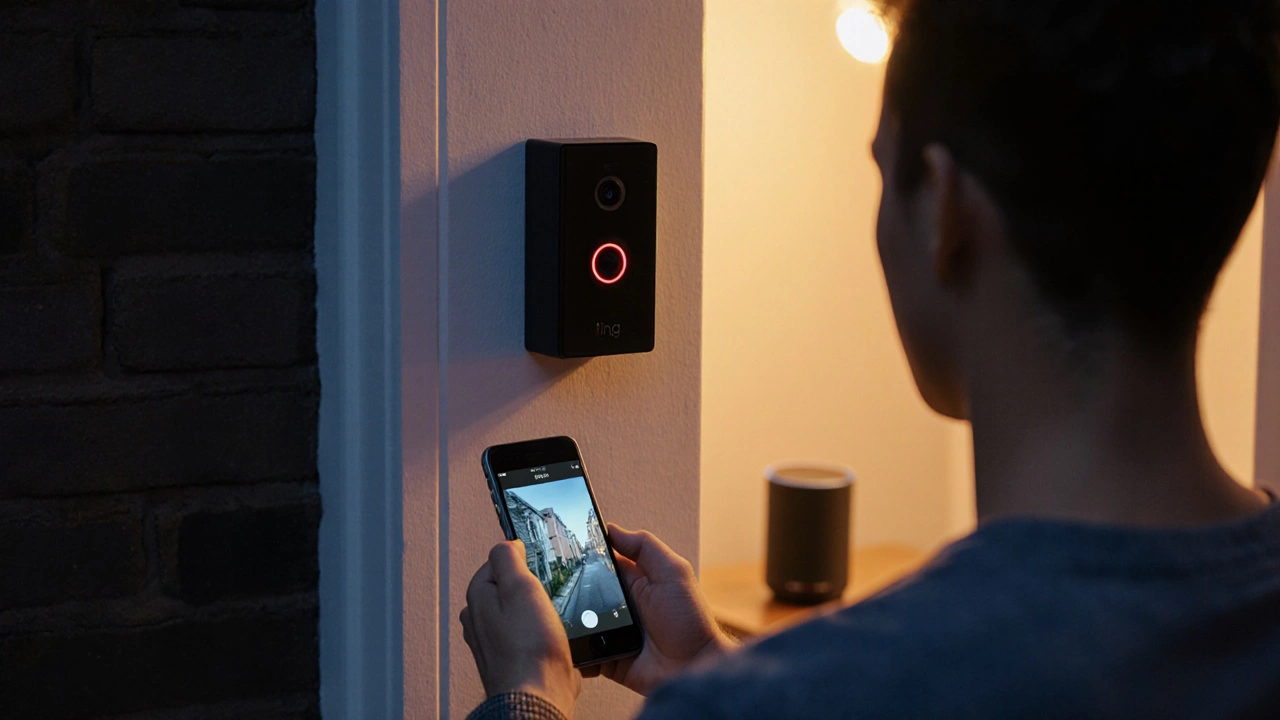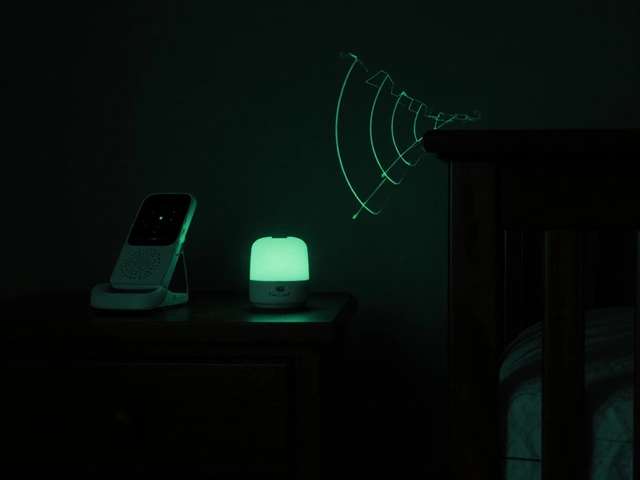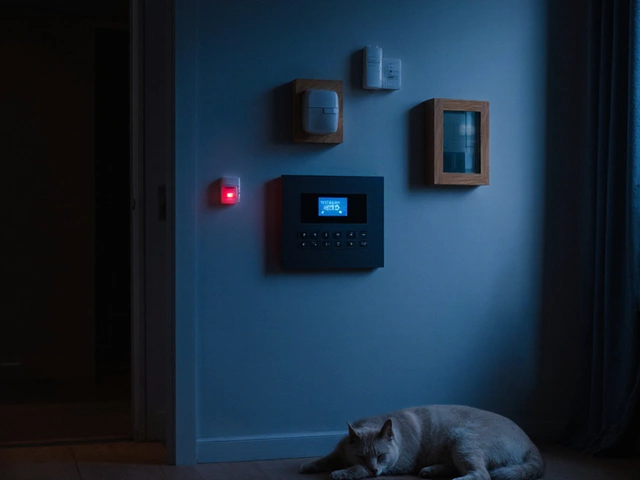Ring Doorbell Pros and Cons Checker
Pros
- Easy DIY installation
- Full-HD video with night vision
- Two-way audio communication
- Alexa integration
- Battery-powered flexibility
Cons
- Subscription required for cloud storage
- Battery life limitations
- Wi-Fi dependency issues
- Privacy concerns
- False motion alerts
Evaluate Your Setup
Your Recommendation
Fill out your setup details and click "Analyze Compatibility" to get personalized recommendations.
Key Takeaways
- Ring Doorbell offers easy installation, full‑HD video and seamless Alexa integration.
- Battery‑powered models give flexibility, but can need frequent recharging.
- Subscription services add advanced features, yet increase ongoing costs.
- Privacy concerns arise from cloud storage and Amazon’s data policies.
- Choosing the right model depends on your Wi‑Fi strength, lighting conditions, and budget.
If you’re weighing whether to add a Ring Doorbell to your front door, you’ve probably seen the sleek black device on countless neighbors’ porches. The promise is simple: see, hear, and talk to anyone at your door from a smartphone, no matter where you are. But does the convenience outweigh the hidden costs and privacy worries? Below, we break down the good, the bad, and the practical tips to help you decide.
How the Ring Doorbell Works
Ring Doorbell is a video doorbell that combines a motion‑triggered HD camera, a built‑in microphone, and a speaker into a single weather‑proof housing. When motion is detected, the device records a short clip and sends a push notification to the Ring app on your phone. You can then stream live video, talk through the two‑way audio, and even unlock a compatible smart lock. The system relies on your home’s Wi‑Fi network for real‑time streaming and cloud storage.
Pros of Using a Ring Doorbell
- Easy DIY installation - most models mount with simple screws or adhesive strips and require only a Wi‑Fi connection.
- Clear, 1080p video with night vision ensures you can identify faces even in low light.
- Two‑way audio lets you speak to visitors, delivery drivers, or potential intruders directly from your phone.
- Alexa integration means you can ask an Echo device to show the door’s live feed on a smart display.
- Customizable motion zones reduce false alerts from passing cars or pets.
- Optional Ring Protect subscription adds 60‑day video storage, advanced motion detection, and the ability to share access with family members.
- Battery‑powered models provide flexibility for renters or homes without existing doorbell wiring.

Cons to Consider Before Buying
- Without a subscription, video clips are only stored locally for a short period, limiting forensic value.
- Battery life varies; high‑traffic areas may require recharging every few weeks.
- Reliance on Wi‑Fi means weak signals can cause lag, choppy video, or missed motion alerts.
- Privacy advocates raise concerns about Amazon’s data handling, especially after past incidents where Ring shared footage with law enforcement without clear consent.
- Annual Ring Protect fees start at $3 per month per device, adding up for multi‑camera households.
- Some users report occasional false motion alerts triggered by tree branches or weather.
Real‑World Scenarios
Imagine a rainy Thursday evening. A package is left at your doorstep, and you’re still at work. The Ring Doorbell’s motion sensor picks up the delivery driver, sends you a notification, and you open the live feed. With two‑way audio, you ask the driver to leave the box on the porch. Later, you can review the recorded clip to confirm the delivery.
Contrast that with a neighborhood prank where teenagers ring the bell repeatedly. Your phone buzzes nonstop, but you quickly mute notifications for a set period using the app’s “Do Not Disturb” feature. The deterrent? The visible camera and audible chime often discourage further mischief.
Ring Doorbell vs. Competitors: Quick Comparison
| Feature | Ring Doorbell (Battery) | Nest Hello (Wired) |
|---|---|---|
| Resolution | 1080p HD | 1080p HD |
| Power | Rechargeable battery (12‑weeks low traffic) | Hard‑wired (continuous) |
| Night Vision | Infrared LEDs | Infrared LEDs + HDR |
| Subscription | Ring Protect (from $3/mo) | Nest Aware (from $6/mo) |
| Smart Assistant | Alexa | Google Assistant |
| Local Storage | None (cloud only) | Optional microSD |
Both devices deliver crisp video, but Ring’s battery flexibility makes it a better fit for renters, while Nest’s wired design suits homeowners looking for continuous power and optional local storage.

Privacy and Security Considerations
Data travels from the doorbell to Amazon’s cloud servers over encrypted TLS connections. However, the real question is who can access that data. Ring’s privacy policy states that footage may be shared with law enforcement when a valid request is presented, even without a warrant in some cases. Users can mitigate risk by disabling cloud storage, limiting sharing permissions, and regularly reviewing the app’s “Shared Users” list.
Another point of concern is motion detection accuracy. Advanced AI models can differentiate between people, animals, and vehicles, but they still rely on large datasets that Amazon collects. If you’re uncomfortable with that level of data collection, consider a doorbell that offers on‑device processing and local storage only.
Buying Tips & Installation Checklist
- Check your home’s Wi‑Fi signal strength at the front door. Aim for a minimum of 5Mbps upload speed.
- Decide between battery and wired models based on your lease terms and power availability.
- Measure the height of your existing doorbell (typically 48‑60inches from the ground) to position the camera correctly.
- Before drilling, verify that your doorframe can accommodate the mounting bracket without compromising structural integrity.
- Enable two‑factor authentication on your Amazon account to protect against unauthorized access.
- If you use Alexa, enable the Ring skill and link your account for seamless voice commands.
- Set up motion zones in the Ring app to focus on the driveway or porch, reducing false alerts from passing traffic.
- Consider a Ring Protect plan if you need long‑term video history or want to share access with family members.
Follow these steps, and you’ll have a functional, secure Ring Doorbell ready to keep an eye on your home.
Frequently Asked Questions
Do I need a subscription to use Ring Doorbell?
A subscription isn’t required for basic alerts and live video, but without Ring Protect you lose cloud video storage and advanced motion features.
Can I install Ring Doorbell on a non‑wired door?
Yes, the battery‑powered version works on any door, and you only need a stable Wi‑Fi connection.
How secure is the video feed?
Video streams are encrypted in transit. Security hinges on the strength of your Amazon account password and two‑factor authentication.
What happens if my Wi‑Fi goes down?
Live streaming stops, but the device still records motion locally on its internal buffer, which uploads once the connection is restored.
Can I share access with neighbors?
Through the Ring app, you can invite up to 50 shared users, each receiving their own notifications and live‑view capability.




